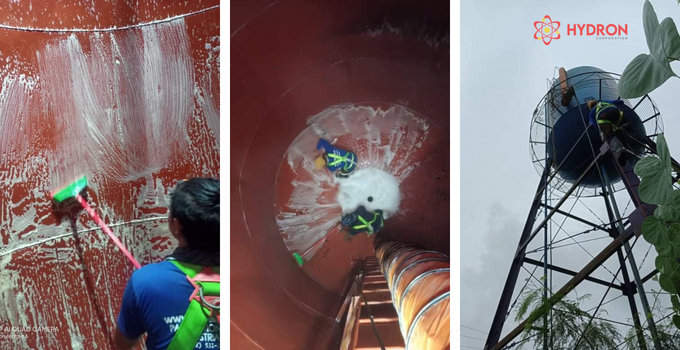How To Clean Water Tank Efficiently
Contaminated water is one of the most common sources of diseases in a household and in the workplace. This happens when the water in your water tank has been exposed or has become a breeding ground for bacteria. The best way to avoid this is to have a clean water tank through regular water tank cleaning and disinfection. But how can you clean your water or cistern tank efficiently?
Steps for Water Tank Cleaning
Water or cistern tank cleaning should be done regularly. To do this efficiently, you will need to perform the following steps.
- Disable the floats in the tank. You can also look for other ways to control the supply of water in the tank.
- You need to drain the tank to about ¼ full.
- Start cleaning the outside of the tank. Use a long-handled scrub, spray, or brush together with potable high-pressure water.
- Focus your cleaning on the air/water interface. This area is prone to bacterial growth due to the rise and fall of the water level.
- Use potable water to clean the tank of any dirt or debris.
- Drain your tank completely. When doing this step, make sure that you direct the flow away from your garden or any nearby water source. This is because the chlorine solution can damage these areas.
- Use a dry or wet vacuum to remove any sediment or water from the bottom of your tank.
- Now fill the tank up to ¾ full using potable water. You can now proceed to the water tank disinfection steps.
How to Disinfect Your Water Tank
Disinfecting your water tank is a necessary step. This is to discourage the growth of unwanted bacteria that can pose a health risk to you. Here’s how to do this efficiently.
- You will need to disable any floats in the tank. Aside from that, you can look for other means to manually control the water level.
- Drain the tank until at least it is ¾ full.
- Turn off all the valves that lead to the distribution system lines.
- You can now add fresh, unscented chlorine into the tank. See to it that the chlorine dose is a minimum of 50 parts per million (ppm).
- Proceed to fill the tank with potable water for chlorine to mix with the water completely.
- Let the chlorine solution sit for 24 hours. Make sure that no one else gets near this disinfecting solution.
- Use chlorine test strips to check for any residuals. There should be a measurable chlorine residual within 24 hours. If there is none, you can repeat steps from 2 to 7.
- You can now drain the tank completely. Again, take care where the chlorine water is disposed of. Make sure that it is not in your vegetable garden, bodies of water, or other important areas.
- Put back any disabled floats in the tank and fill it with potable water.
Water tank cleaning is an important step in making sure that your family and employees are drinking potable and clean water. Doing this regularly will not only protect you against contamination but also ensure that your water tanks are working efficiently.
How often should you clean your water tank? We advise that if your water tank hasn’t been cleaned for 6 months or more, consider scheduling a cleaning soon. Finding the right water tank cleaning service near you is important to ensure that your water supply is clean and safe and that your health is always protected.

